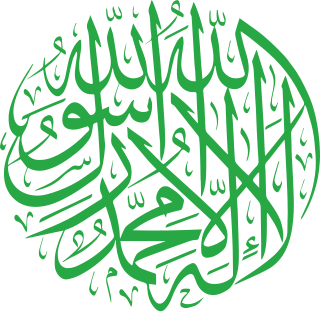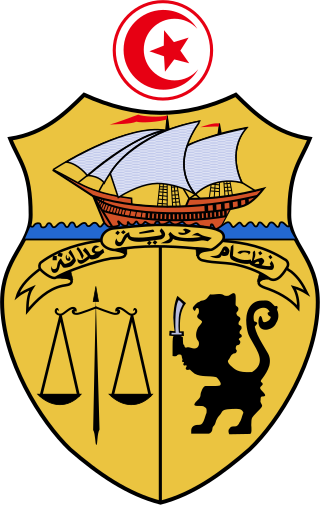"Allah Peliharakan Sultan" is the national anthem of Brunei Darussalam. The anthem is sung in Malay, the national language of the country. It was written by Pengiran Haji Muhammad Yusuf bin Pengiran Abdul Rahim, better known by his pen name Yura Halim, and composed by Haji Besar bin Sagap in 1947. The song was adopted in 1951 as the national anthem of the British protectorate of Brunei. It was adapted as the national anthem of Brunei Darussalam upon independence from the United Kingdom, and was sung as the national anthem of the independent state at the stroke of midnight 1 January 1984.

The national flag of Brunei holds deep historical and symbolic significance, reflecting the nation's royal heritage and unity. First introduced in 1906 when Brunei became a British protectorate, the flag originally featured the now-familiar yellow, white, and black design, representing solidarity among the agreement's signatories. The red national emblem, symbolising government support and unity, was added following the proclamation of the constitution in 1959. The flag’s design incorporates traditional Southeast Asian royal colours, with yellow symbolising the monarchy, white and black representing the purity and strength of Brunei’s wazirs, and red symbolising bravery and unity. Today, the flag stands as a powerful emblem of Brunei's Islamic faith, royal authority, and enduring national identity.

The Ottoman Empire used various flags and naval ensigns during its history. The crescent and star came into use in the second half of the 18th century. A buyruldu (decree) from 1793 required that the ships of the Ottoman Navy were to use a red flag with the star and crescent in white. In 1844, a version of this flag, with a five-pointed star, was officially adopted as the Ottoman national flag. The decision to adopt a national flag was part of the Tanzimat reforms which aimed to modernize the Ottoman state in line with the laws and norms of contemporary European states and institutions.

The coat of arms of Malaysia is a coat of arms comprising a shield or escutcheon, two tigers for supporters, a crescent and fourteen-pointed star for a crest and a motto. As the Malaysian coat of arms descended from that of the Federated Malay States under British colonial rule, it resembles European heraldic designs.

Islam is an Abrahamic monotheistic religion teaching that there is only one God and that Muhammad is the last messenger of God. It is the world's second-largest religion, with over 2 billion followers (Muslims) comprising nearly a quarter of the world's population.

The Rub el Hizb is an Islamic symbol in the shape of an octagram, represented as two overlapping squares ۞. While its main utility today is to mark a division inside some copies of the Quran to facilitate recitation, it has originally featured on a number of emblems and flags in the past and continues to do so today.
Melayu Islam Beraja was officially proclaimed as the national philosophy of Brunei on the day of its independence on 1 January 1984 by Sultan Hassanal Bolkiah.
An Islamic flag is the flag either representing an Islamic caliphate, religious order, state, civil society, military force or other entity associated with Islam. Islamic flags have a distinct history due to the Islamic prescription on aniconism, making particular colours, inscriptions or symbols such as crescent-and-star popular choices. Since the time of the Islamic prophet Muhammad, flags with certain colours were associated with Islam according to the traditions. Since then, historical caliphates, modern nation states, certain denominations as well as religious movements have adopted flags to symbolize their Islamic identity. Some secular states and ethnic or national movements also use symbols of Islamic origin as markers of heritage and identity.

The coat of arms of Tunisia is divided into three parts. The upper part features a Carthaginian galley sailing on the sea—the symbol of freedom. The lower part is itself divided vertically: on the left there is a black scale—the symbol of justice, and on the right is a black lion grasping a silver scimitar—the symbol of order. Between the two parts is a banner bearing the national motto: "Freedom, Order, Justice. At the top of the coat of arms is a circle with a red border into which is inserted the red crescent and star appearing on the flag of Tunisia.

The Omar Ali Saifuddien Mosque or unofficially Sultan Omar Ali Saifuddin Mosque, is a mosque in Bandar Seri Begawan, the capital of Brunei. Omar Ali Saifuddien III, the 28th Sultan of Brunei, is credited with building the mosque, thus its name. It is one of the two state mosques, the other Jame' Asr Hassanil Bolkiah Mosque. One of the biggest and most striking mosques in the Far East, it was completed in 1958 at a cost of $5 million USD. The Mughal architecture of India had a significant effect on the design.
The flag and emblem of Perak are state symbols of Perak, Malaysia. These two symbols are distinct from each other in style. Similar to other states of Malaysia with Malay royalties, both the flag and arms of Perak are influenced by royalties, Islam, and political symbols of the state.
The flag and the coat of arms of Johor are state symbols of Johor, Malaysia. Like other states of Malaysia with Malay royalties, the state symbols of Johor are influenced by Johor's royalties, as well as Islam and the political and natural features of the state.
The flag and the coat of arms of Kelantan are state symbols of Kelantan, Malaysia. Like the flag of Kedah, the Kelantanese flag is red with a single charge from Kelantan's coat of arms, albeit partially.
The flag and the coat of arms of Terengganu are state symbols of Terengganu, a state in Malaysia. Like the majority of state symbols for states with Malay royalties, the flag and the arms of Terengganu centre on its royalty, as well as Islam, the state's traditional religion.
The flag and emblem of Selangor are state symbols of Selangor, Malaysia. These two symbols are distinct from each other in style. Similar to other states of Malaysia with Malay royalties, both the flag and arms of Selangor are influenced by royalties, Islam, and political symbols of the state.
'Alam al-mansûr or liwa' al-mansûr is a form of flag that was used as the emblem of the Almohad, Marinid, and Saadi dynasties of Morocco consisting of a white banner with an Islamic symbol written on it which were followed in parades by several banners of different colors, most of them red.

Barisan Pemuda (BARIP), also known as the Youth Front or Brunei Youth Front, was an early left-wing political party formed in Brunei. It began as a political youth organisation in late 1946 with the goal of bringing the Bruneian Malays together and achieving independence for Brunei. It was said that the three main founders of BARIP were Salleh Masri, Pengiran Yusuf, and Jamil Al-Sufri.
The national symbols of Malaysia are symbols that represents the governmental and cultural images of the Federation of Malaysia. There are generally five recognised elements of the symbols which are national emblem, national anthem, national flag, national flower and national language. The first official symbols, flag and anthem were prepared in 1957. In addition, there are several traditional symbols such as national bird, national flower, national animal and national craft. There are also popularly recognised symbols including national airline, national colour, national dress, national sport, national poetry and national mausoleum.












